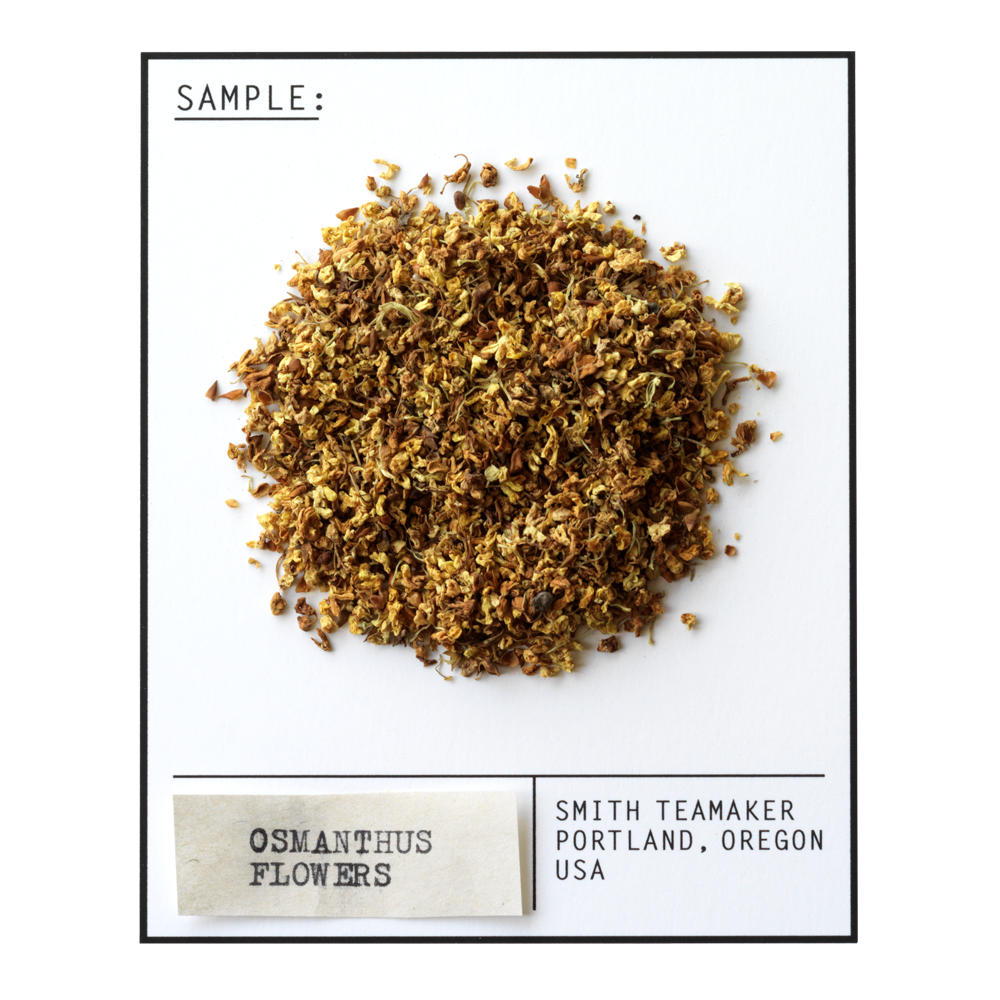







Ingredients
White full leaf tea from China, Chinese osmanthus flower, Egyptian chamomile petals and natural flavors.
Blend Numerology
The number of chamomile petals in each ounce of this tea.
Preparation
For best flavor, bring spring or freshly drawn filtered water to 190 degrees. Steep three minutes. Let all thoughts of white elephants leave your mind completely.
- Select an Ingredient:
- bai mu dan
- chamomile petals
- osmanthus flower
Bai Mu Dan
Chinese White Tea
Bai Mu Dan, or White Peony, is often considered the second highest grade of white tea (after Silver Needle) and was traditionally produced in the northern Fujian Province of China. It comes from the top two leaves and bud of the tea bush, which can be shade dried and/or lightly fired. This gives Bai Mu Dan a pale cup color and delicate, nutty aroma. The flavor is delicate and complex, with toasty, slightly sweet floral notes and a clean aftertaste.
Fujian Province
Fujian Province is one of the most famous tea growing regions located on the southeast coast of China. Black, white and oolong teas are all thought to have originated from this province. With Taiwan so close in proximity, there has been much sharing of knowledge between the two in terms of tea plants and production. Oolongs have two harvest seasons, in late spring and fall.

Chamomile Petals
Egyptian Botanical
These white petals come from our favorite chamomile flowers, much of which are removed during sorting. For the petals that remain attached, we carefully hand-screen these blossoms at our facility. These petals fresh flavor add distinctive character to our White Petal blend.
Faiyum
Introduced to Egypt from Europe a half century ago, chamomile brings the joy of festive harvest to the oasis of Faiyum. Sourced from Central Egypt, the Nile provides ample water and fertile soil for the world’s finest tasting blossoms. Harvest season for these golden buds is January to April.

Osmanthus Flower
Chinese Botanical
Osmanthus is a species of evergreen shrubs and trees native to Asia. Its flowers are extremely fragrant and when made into a tea have strong peach notes. A favorite of Steve's, we use this botanical in our signature White Petal blend.
Zhejiang Province
Zhejiang Province is located in Eastern China, directly south of Shanghai and Jiangsu Province. These three areas made up a region known in earlier times as the "Land of Fish and Rice". Today, Zhejiang still holds up its end of the bargain as home to China's largest fishery and as one of the largest food producers, along with leading in tea production. Osmanthus is harvested here in the summer to be blended with tea, herbs or enjoyed on its own.
